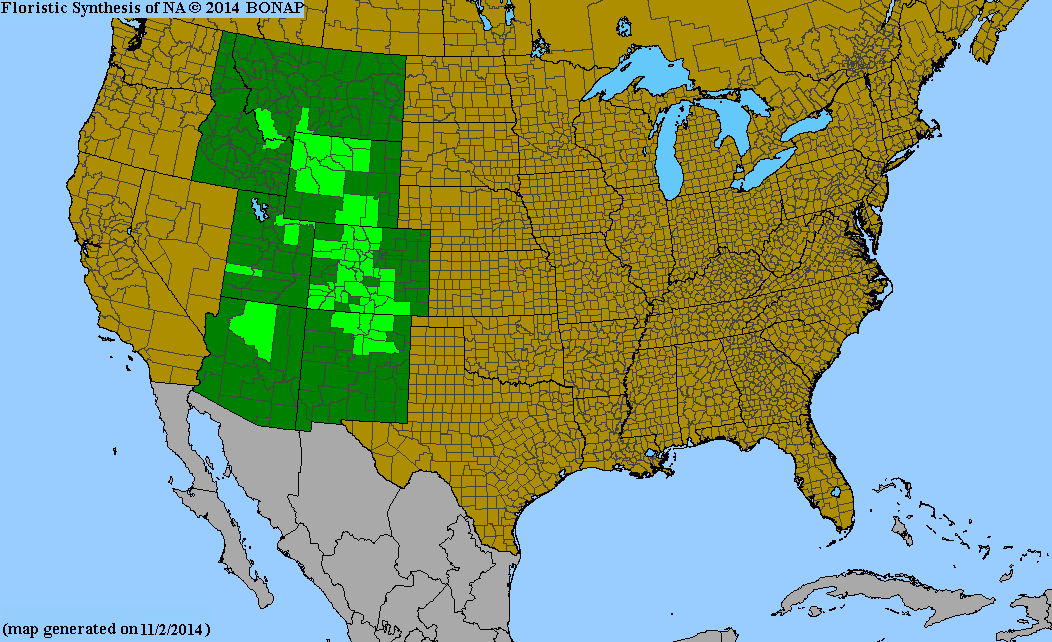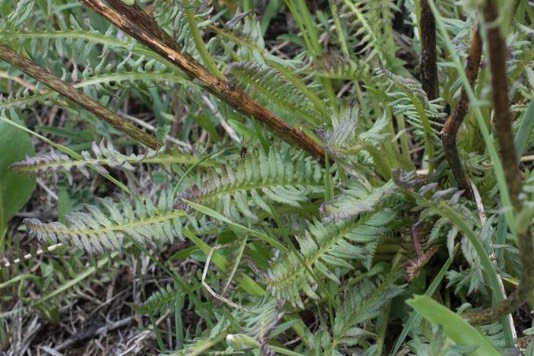(Parry’s Lousewort)
| Scientific Name | Pedicularis parryi ssp. parryi | USDA PLANTS Symbol | PEPAP4 |
| Common Name | Parry's Lousewort | ITIS Taxonomic Serial No. | 524417 |
| Family | Orobanchaceae (Broomrape), formerly Scrophulariaceae | SEINet References |
3136 11690 |
| Description |
Life zones and habitat: Subalpine to alpine; mountain and alpine meadows. Plant: Erect perennial 4 to 24 inches tall; cluster of several reddish stems. Leaves: Mostly basal leaves 1-1/4 to 6 inches long, pinnatfid (fern-like) with teeth along edges of the lanceolate lobes. Inflorescence: A dense spike-like raceme 2 to 10 inches long of 5 to 50 flowers with pale yellow to white two-lipped corollas, the upper lip hooded and the lower lip with 3 lobes; green calyx with reddish-purple streaks and 5 pointed lobes; green bracts just below with 1 or 2 pairs of narrow linear lobes. Bloom Period: July and August. References: "Flora of Colorado" by Jennifer Ackerfield, "Guide to Colorado Wildflowers" by G.K. Guennel, Flora of North America and SW Colorado Wildflowers. Note: The plants here are thought to be ssp. parryi because of their location (above 12000 ft.), lack of stem leaves and entire bract margins (except for the lobes). |
BONAP Distribution Map Map Color Key |
Colorado Status: Native |
© Tom Lebsack 2025
Banner photo: Castilleja rhexifolia and a brewing storm over the San Juan Mountains
I try to provide accurate, up-to-date, and relevant information, but cannot guarantee the completeness or accuracy of any information presented on this website. I use authoritative references to insure high standards of accuracy and review and update the information frequently.


